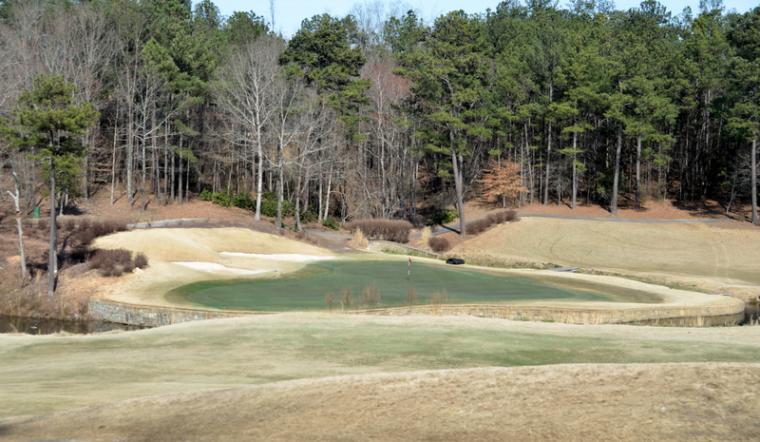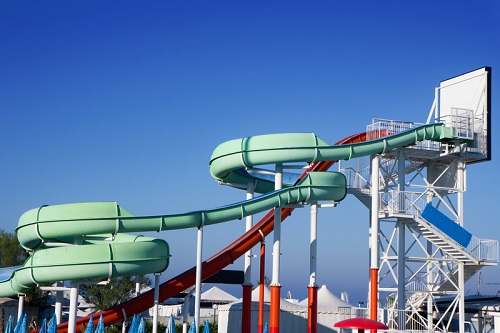
California’s drought continues this summer and officials have responded by tightening restrictions on water use. This has affected not just homeowners who want to water their lawns but tourist attractions, including spray parks, as well as swimming pools.
“I want to stress how critical this is: The amount of water we have available to us right now is not going to be enough to carry us through the entire year unless we do something different,” Adel Hagekhalil, the general manager for the Metropolitan Water District of Southern California, told reporters from the New York Times. “This is a wake-up call.”
Shasta Lake, the largest reservoir in California, was 60 percent lower than usual; this marked the lowest its level has been since mid-1977. Oroville, the state’s second-largest reservoir, was just 55 percent full. And with no significant rain or snow expected for another six months, it’s obvious the situation won’t be getting better any time soon.
Service Industry News noted, “According to the U.S. drought monitor, more than 92 percent of California is in severe drought conditions. Recent measurements of the Sierra snowpack, which is used to carry the state through the summer months, is 70 percent below normal. And because Northern California and the Central Valley are in worse conditions than Southern California, Northern California cities are getting serious about water-use restrictions.”

The restrictions are creating friction with residents who want to fill pools, with pool companies that want to build them, and with the trade association, the California Pool and Spa Association (CPSA), which is squarely in the middle of the crosshairs of the fight with the Marin and North Marin Water Districts over the recently enacted ordinance that prohibits filling new pools.
But while many restrictions extend only to residential pools, Bakersfield’s Parks and Recreation Department announced in a social media post a reduction in the city’s spray park hours. Spray parks, the post noted, will operate only from 1 p.m.-6 p.m. Wednesday through Sunday. They will be closed Mondays, except for holidays, and Tuesdays.
And that is something that just might concern those who have family-friendly events in the area.
For now, sports facilities seem to be safe from problems caused by the restrictions. According to the California State website, Governor Gavin Newsom ordered the State Water Resources Control Board (SWRCB) to evaluate the adoption of regulations banning irrigation of “non-functional” turf (or grass), such as decorative grass adjacent to large industrial and commercial buildings. The ban would not include residential lawns or grass used for recreation, such as school fields, sports fields and parks (A copy of the executive order can be found here).
However, golf courses weren’t mentioned specifically. Facility managers are already being encouraged to take preventive measures, said a post on TurfNet.
"The time to plan for this is now," said Craig Kessler, director of public affairs for the Southern California Golf Association. "Get the message, and let's start doing it before it is mandatory. Document what you are doing and be a good corporate and environmental citizen and life will go better for us."
As far back as 2015, golf courses were feeling the heat. Then-Governor Jerry Brown ordered campuses, golf courses, cemeteries and other large landscapes to “significantly cut water use.” Golf courses across the Golden State responded to the restrictions by using alternative water sources, switching from potable tap water to recycled, untreated wastewater. Many stopped watering their rough areas. One water board in Southern California even began offering turf reduction rebate program, in which golf courses were compensated $2 per square foot of grass that they removed from their courses. Some went to artificial turf. Others added mulch in areas that were generally not considered playable.
This year’s water conservation methods, however, are different. The difference between current restrictions compared with the 20 percent minimum mandated in 2015, is the former accounts for differences in microclimates and water supplies across the state.
Golf course managers are expecting restrictions to be expanded if drought conditions persist through the summer. Because further cutbacks appear to be imminent, Kessler says now is the time to develop a water savings plan.
"This is a clue to get out front. If you are proactive and get out front before they make you (reduce water use), it will always go better for you."
Austin Daniells, a regional superintendent for U.S. Navy golf courses in California, told Turf.Net that said golfers historically have been understanding of restrictions and of the need for conservation measures.
"We're already behind the 8-ball every year anyway," he said. "When we cut back, if we focus down the middle, I don't know if it really affects the golfer. As a superintendent, I want the property to look the best it can year-round, we all do. At the same time, if we focus down the middle, we can make down the middle look as good as we can in the heat of the summer and still provide a quality product."

